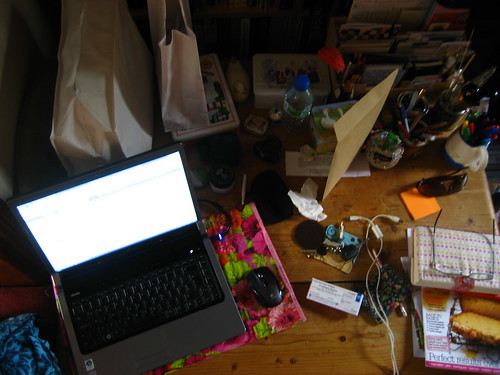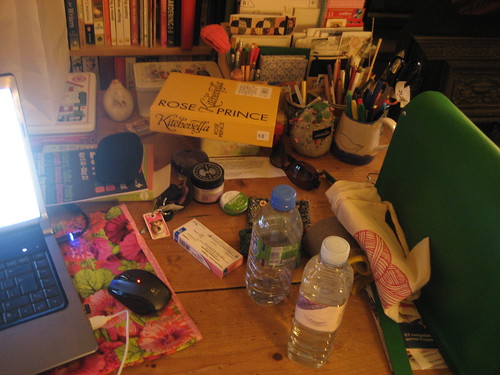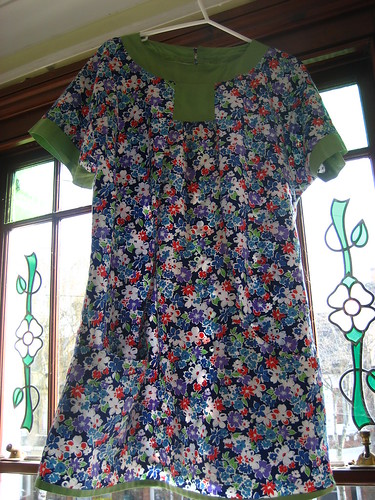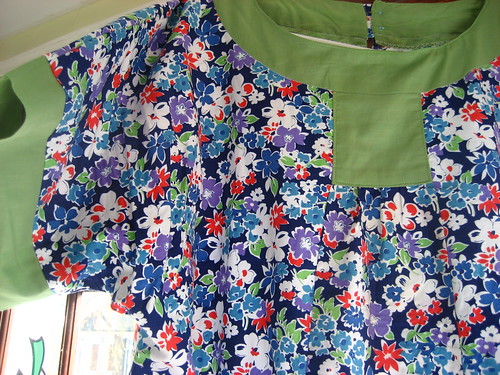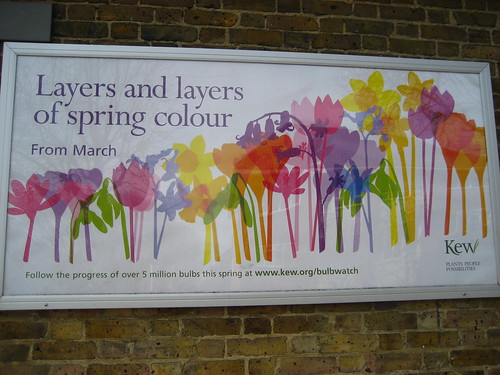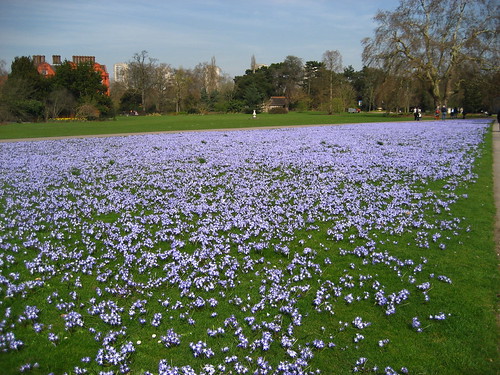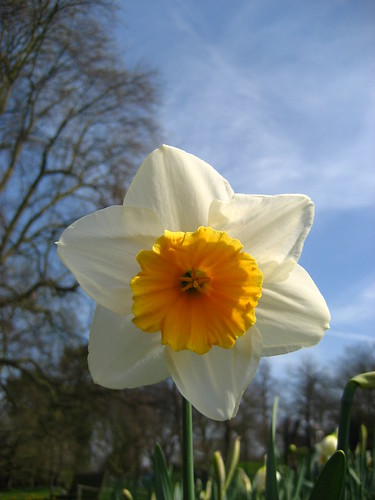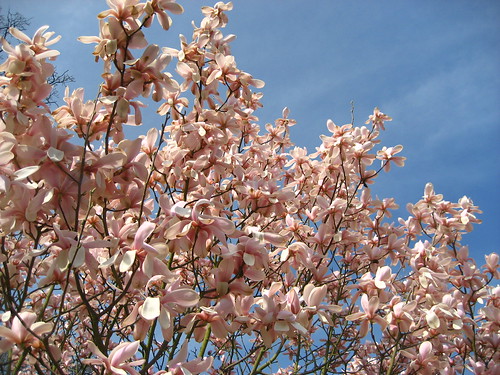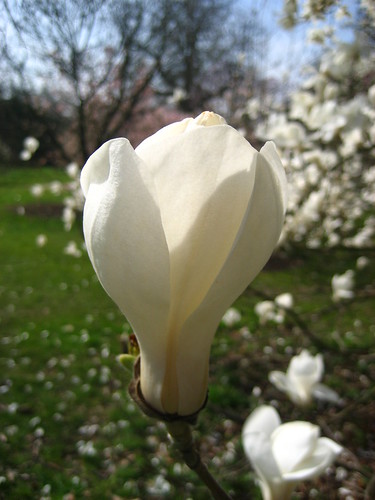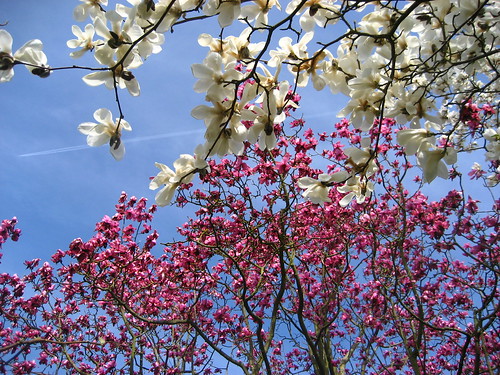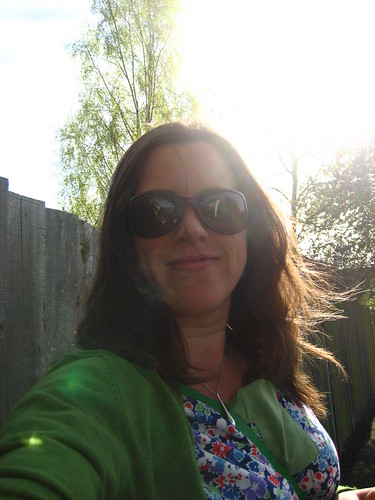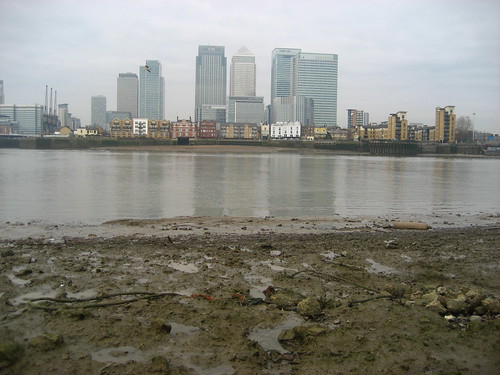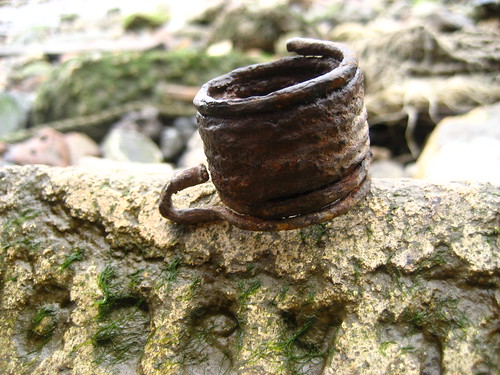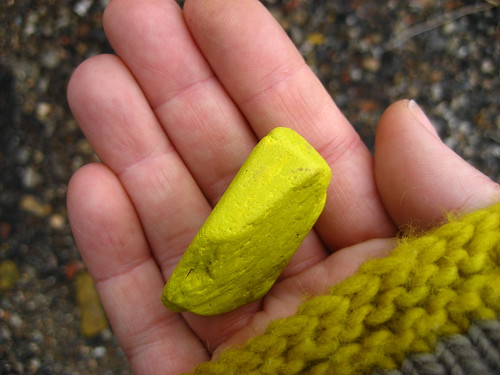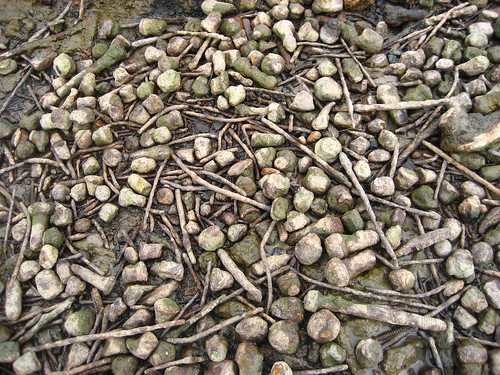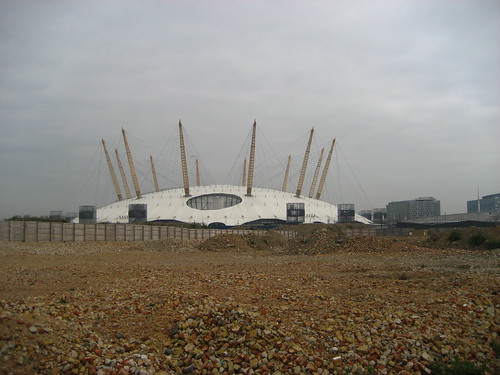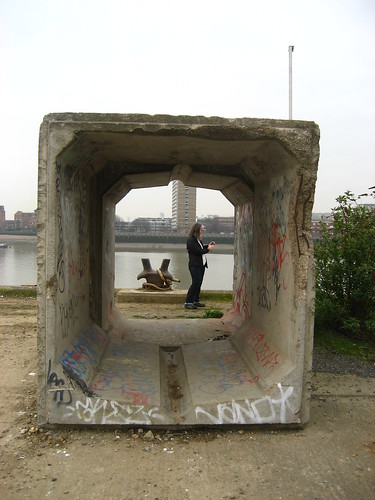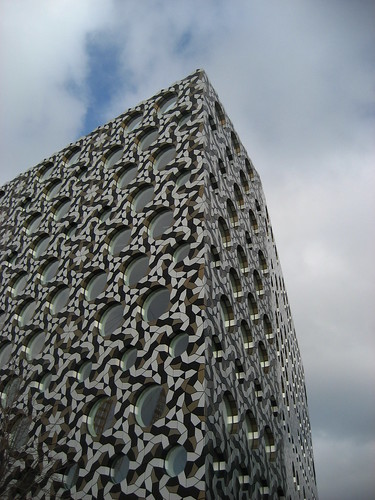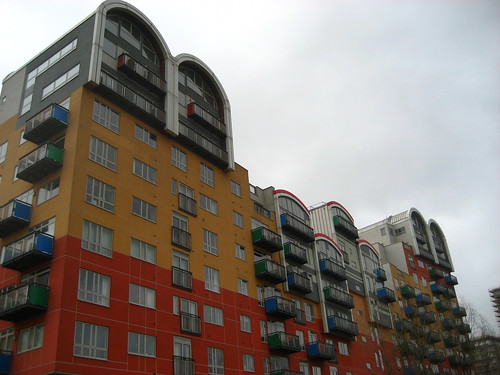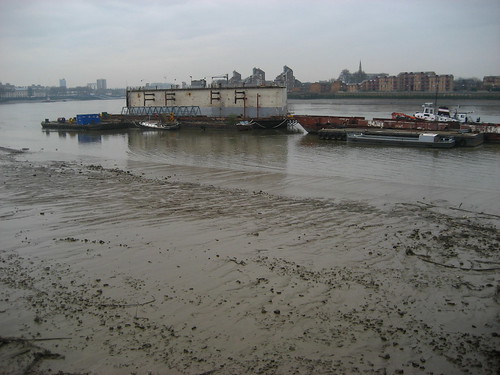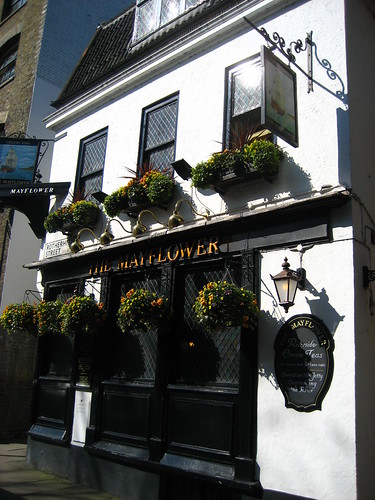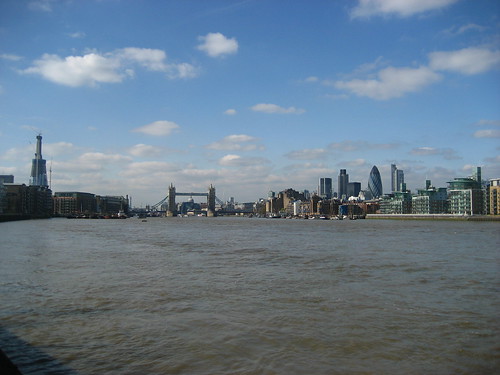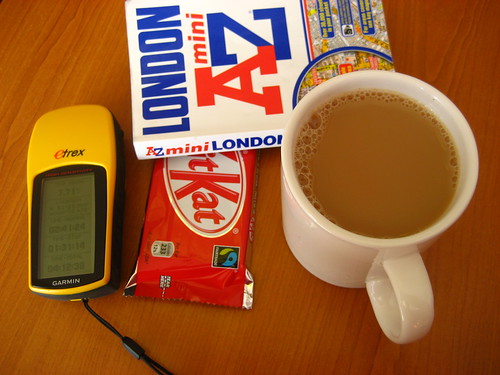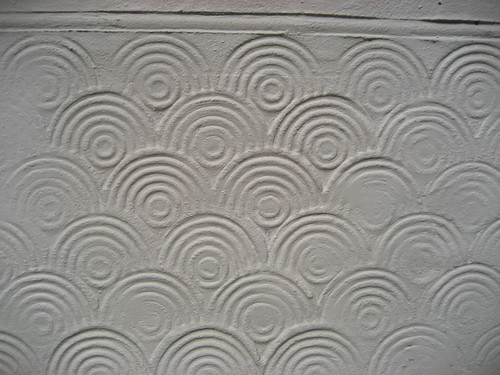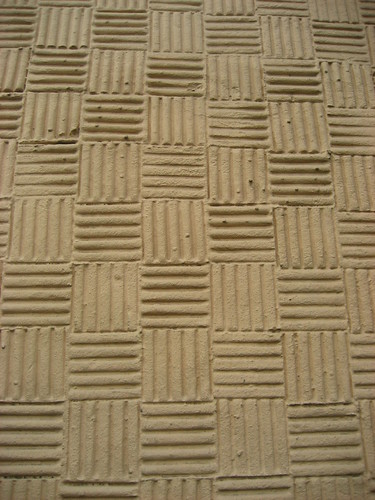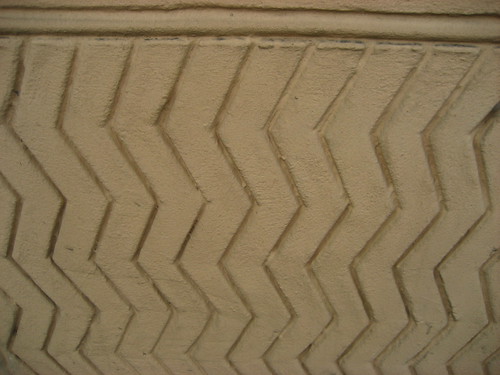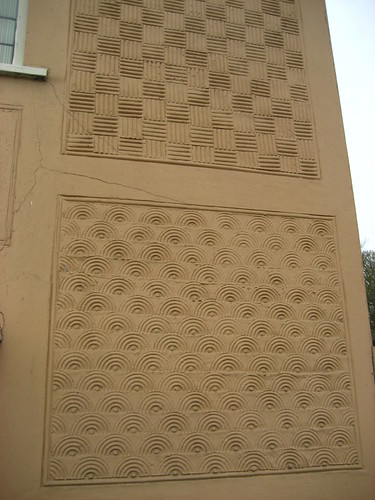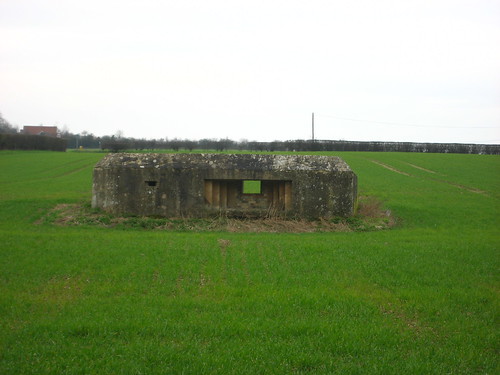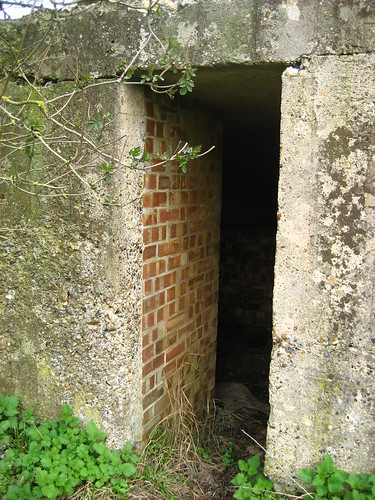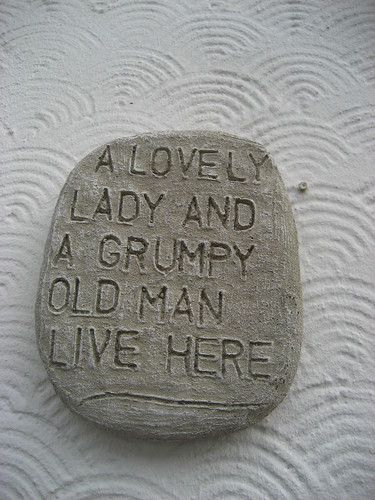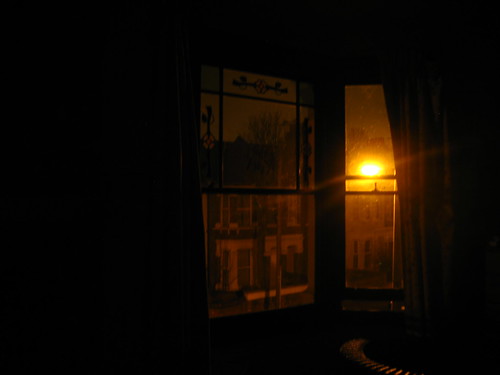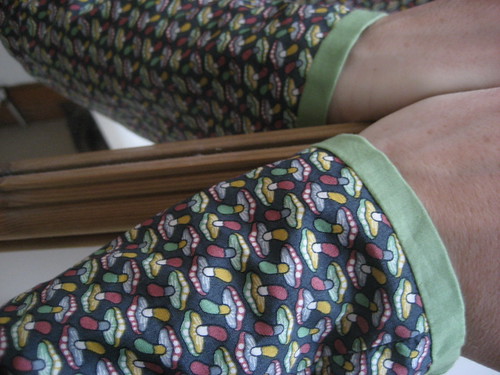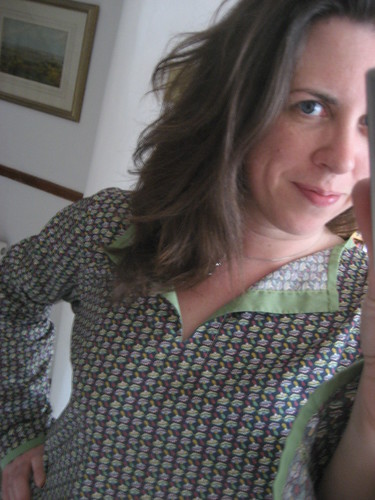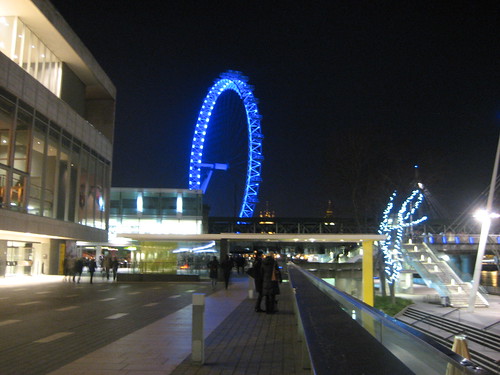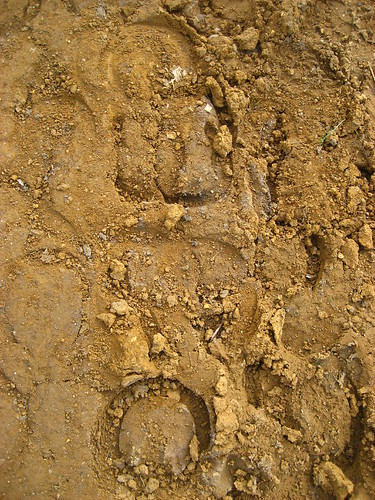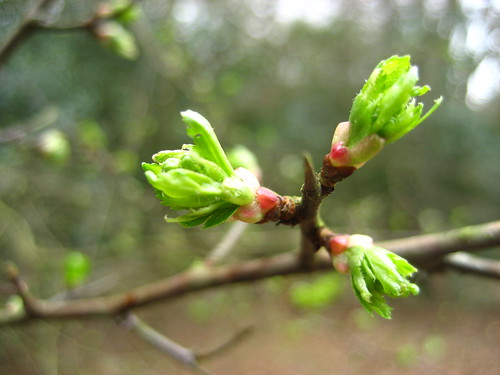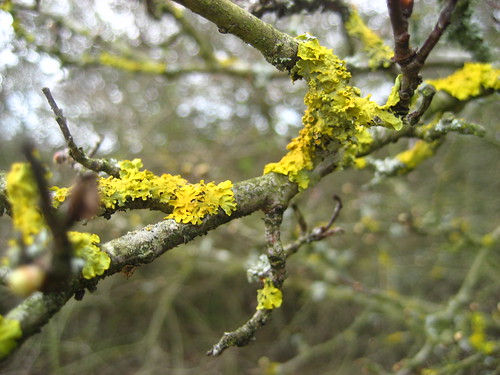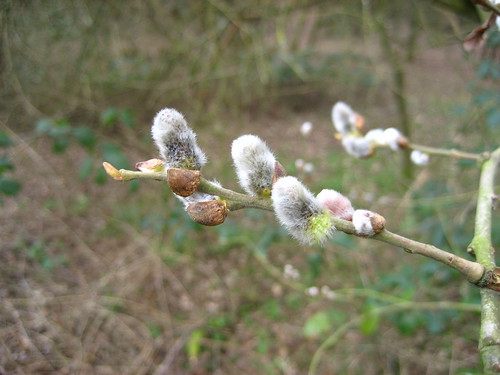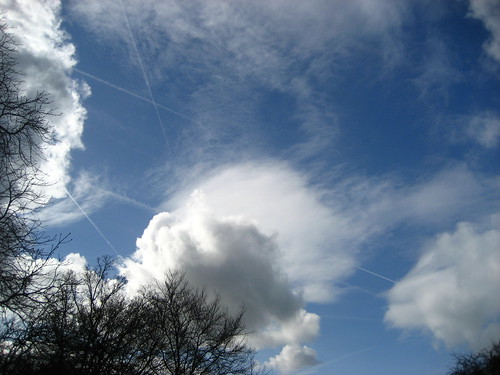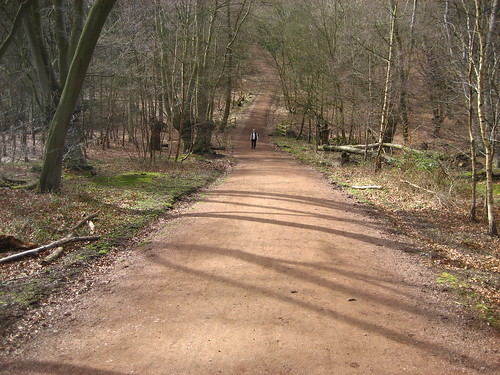For our walk this week we went back to the Thames, to continue where we left off at the end of walk number 6. And yet again, we found ourselves delaying the start of our walk as we'd unwittingly turned up at low tide, and there was a vast stretch of muddy, rubbish-strewn foreshore to explore.
We were on the North Greenwich peninsula, just next to the Millennium Dome, and we clambered down as close to the edge of the water as we could get without falling in. The rocks were very slippy with mud and seaweed, so we trod carefully.
With the tall towers of Canary Wharf looking over us we poked around in the mud and the pebbles, to see what we could find.
A marble and a glass bottle stopper ball
Part of an old spring
Not a toxic lump of sulphur, as I first thought - but a chunk of wax crayon
One of the strangest things was something we noticed gradually, as we explored. Almost the whole beach was covered with a thick layer of old metal - mainly long nails, pieces of chain and chunky nuts and bolts. What I first thought was a beach full of pebbles was in fact a beach full of eroded old bolts - worn by the tides to look like rounded pebbles.
Metal detritus on the beach
The bolts are so obviously from ships that I was quite alarmed at the apparent fragility of the boats that go up and down the Thames. But then when I got home I discovered that this small stretch of the river used to be home to several shipyards, and that the shipbuilders were careless with their recycling, rather than shoddy in their workmanship.
Chains and old nails in the mud
Once we had filled our backpacks with too many rusty bits of old metal to be practical, we set off along the riverbank, towards the centre of town.
It turned out to be a walk of two distinct parts. The whole length of our walk - nearly eight miles from the North Greenwich peninsula to Bermondsey - used to be part of the London Docklands. The Docklands was once the teeming hub of a trade-fuelled empire, it declined rapidly and irrevocably after World War II, lay derelict for several decades and then was regenerated, starting in the late 1980s and continuing on into the late 1990s and up to the present day.
But the regeneration has been so varied, and I felt on this walk that we saw both the very good and the very disappointing.
The first part of our walk - from the Millennium Dome to Deptford - has seen the most recent regeneration, at the time of the new millennium, just over ten years ago. The regeneration here has been so patchy; huge buildings with bold architectural styles, interspersed with vast chunks of still-derelict wasteland. There's no sense of community as you walk from one building to the next - people are kept apart by long stretches of security fencing or hoardings.
Derelict quay in North Greenwich
Strangely clad office block next to the Millennium Dome
Derelict arches in Deptford
New tower blocks in North Greenwich
Mud and barges on the Greenwich peninsula
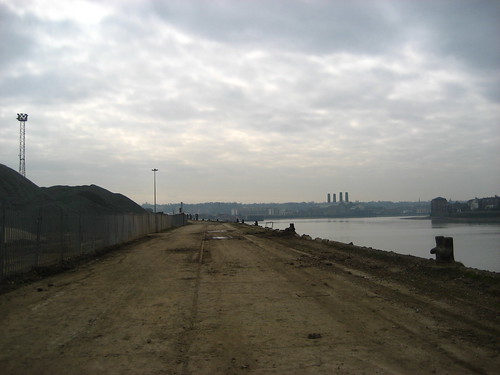 Wharf and aggregate plant in North Greenwich
Wharf and aggregate plant in North Greenwich
But when we got to Surrey Quays, Rotherhithe and Bermondsey the mood of the river, and our mood, changed. The sun came out too, which helped. These areas were regenerated back in the late 1980s and were done in a very different way.
More houses and fewer appartment blocks were built. There were fewer grand 'statement' buildings erected, and more old pubs and gardens were kept. There is a palpable sense of community here - with noticeboards, schools, posters for local events, prosperous looking pubs and more mature plants and trees.
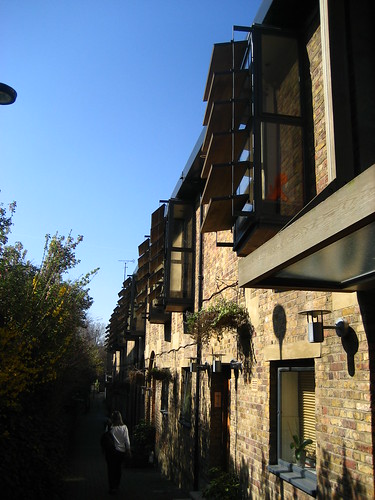 Terraced houses with funky windows in Rotherhithe
Terraced houses with funky windows in Rotherhithe
Fancy a pint? The Mayflower in Rotherhithe
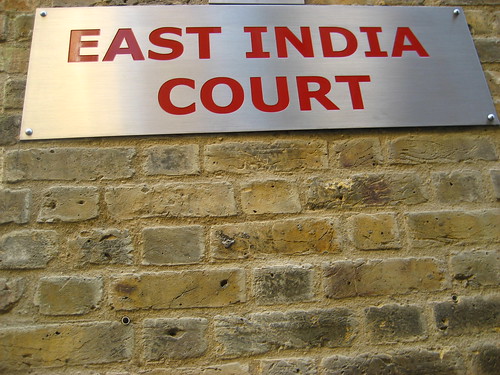 Old name for a newish (1980s) building in Surrey Quays
Old name for a newish (1980s) building in Surrey Quays
Lunchtime marathon training in Bermondsey
I hope that the difference is simply due to the extra time since Surrey Quays, Rotherhithe and Bermondsey were regenerated - twenty years or more compared to a mere decade or so for North Greenwich. Perhaps North Greenwich will catch up.
We ended at Bermondsey with absolutely glorious views along the river to Tower Bridge, St Paul's Cathedral and the impressive buildings of the City.
Except, that wasn't quite the end. We sloped off to a cafe on the busy Jamaica Road in Bermondsey and treated ourselves to a good strong cup of tea and a kitkat, before catching the tube home.
